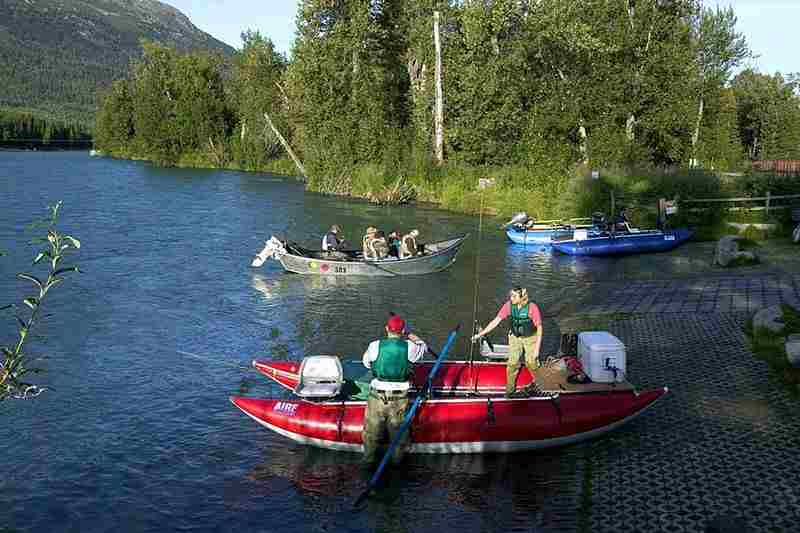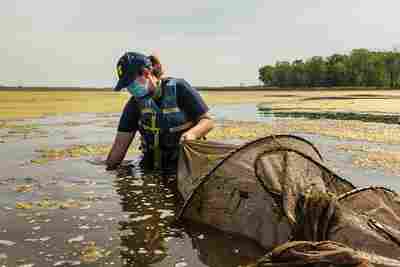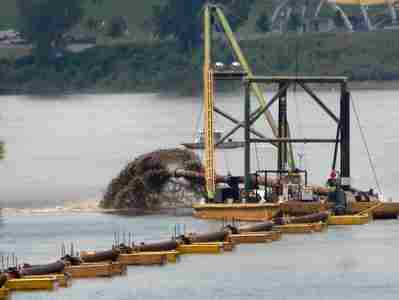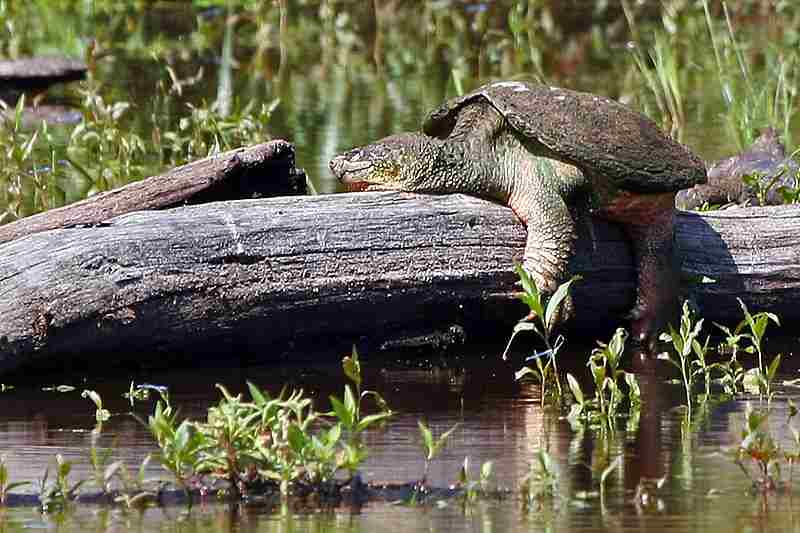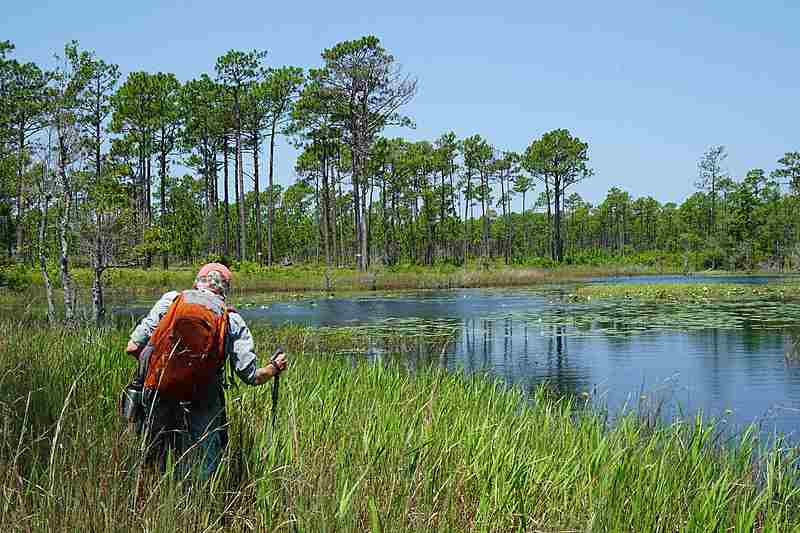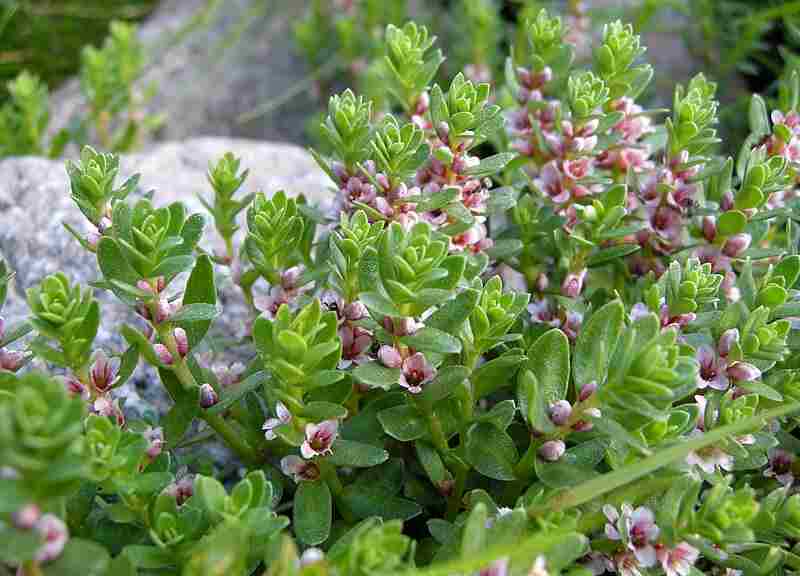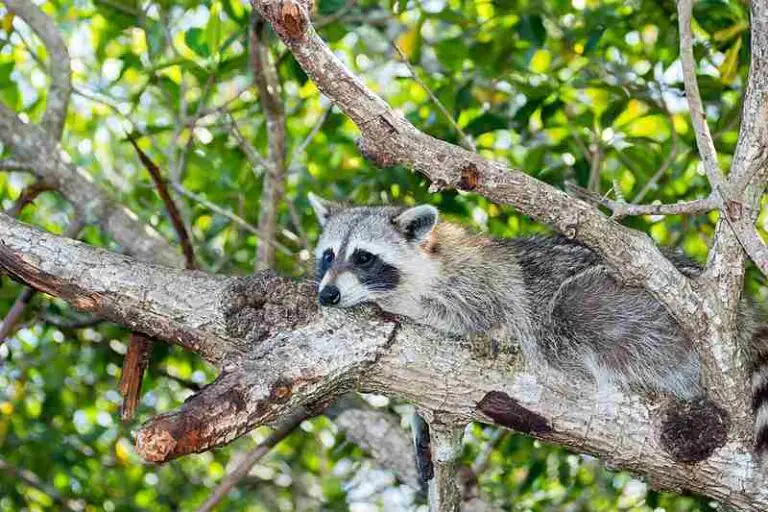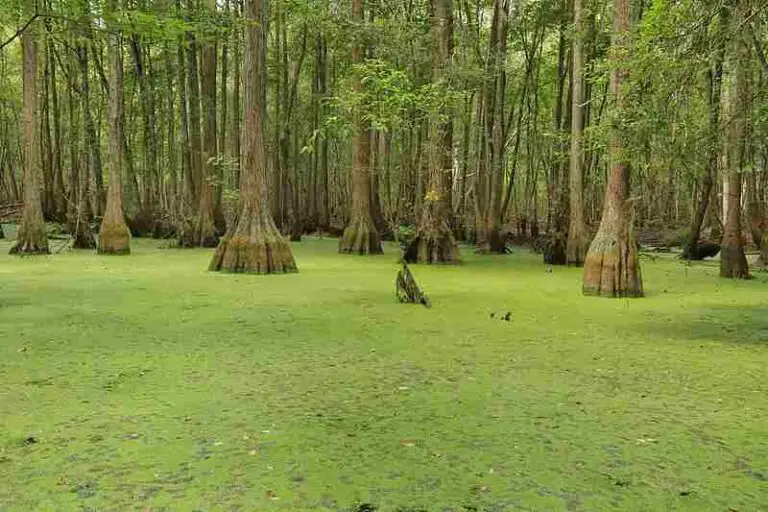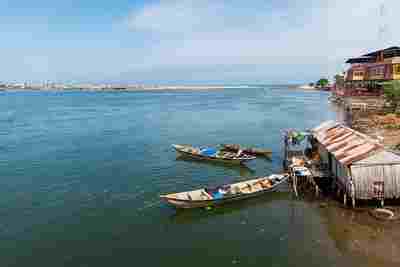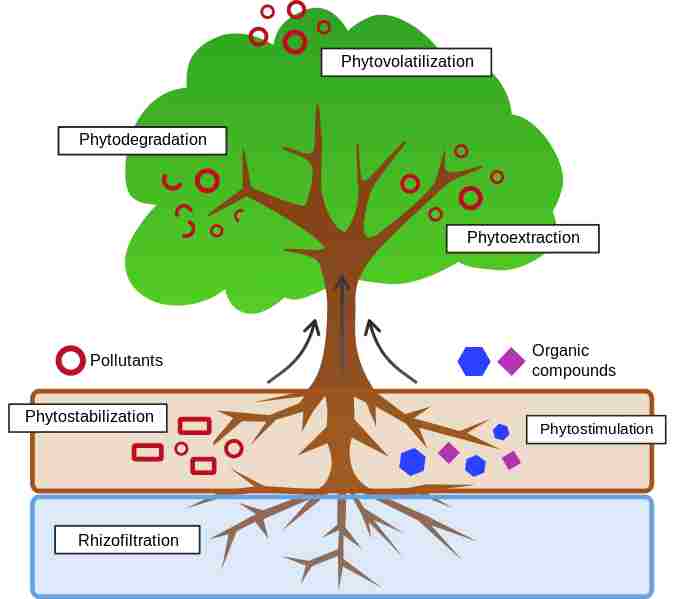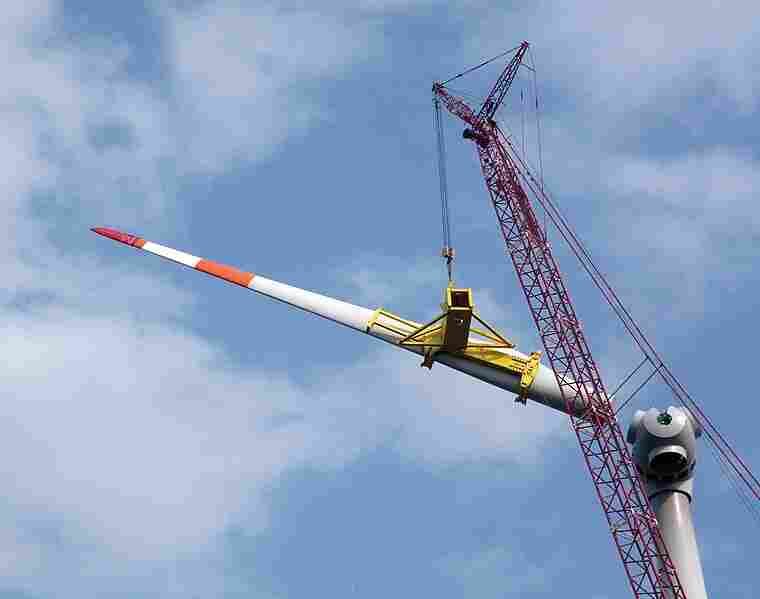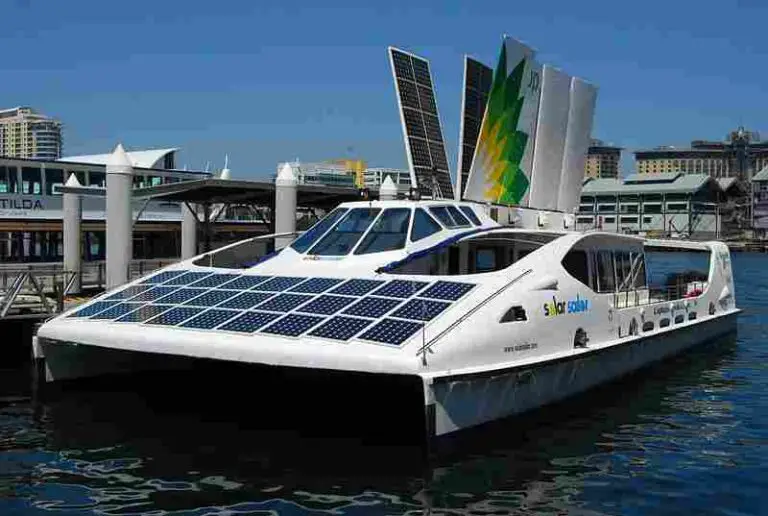10 Coastal Ecosystem Services and Their Significance
Coastal ecosystem services include; nutrient cycling, erosion control, carbon sequestration, habitat provision for marine organisms, water containment and distribution, seafood habitation, tourism, cultural symbolism, scientific knowledge provision, and land-sea synchronization.
This article discusses coastal ecosystem services and their significance, as follows;
1). Nutrient Cycling
Nutrient cycling in coastal ecosystems is a crucial ecological process that plays a fundamental role in maintaining the health and productivity of these vital environments.
Coastal ecosystems, such as estuaries, mangroves, seagrass beds, and salt marshes, are dynamic transition zones where land and sea meet. Nutrient cycling within these ecosystems involves the movement and transformation of essential elements like carbon, nitrogen, and phosphorus. This section contains an overview of how nutrient cycling works in coastal ecosystems and its ecological significance.
Mechanism and Significance of Nutrient Cycling in Coastal Ecosystems
Nutrient inputs, biological uptake, biodegradation, nutrient transformation, trophic transfer, and nutrient export ad factors that are referenced when discussing nutrient cycling in/by coastal ecosystems.
Coastal ecosystems receive nutrients from multiple sources, including rivers, upwelling currents, atmospheric deposition, and local biological processes. River runoff is a significant contributor, carrying nutrients from the terrestrial environment into coastal waters. These nutrients can be both natural, originating from geological and weathering processes, and anthropogenic, arising from human activities such as agriculture and urbanization.
Primary producers like phytoplankton, seagrasses, and salt marsh vegetation play a crucial role in nutrient cycling. They assimilate nutrients, particularly nitrogen and phosphorus, from the water. Phytoplankton are key contributors to primary production in the water column, while seagrasses and marsh plants fix nutrients from sediments.

Organic matter, including dead plants and animal detritus, accumulates in coastal ecosystems. Decomposers like bacteria and fungi break down this organic material, releasing nutrients back into the environment. This decomposition process is essential for recycling nutrients and maintaining ecosystem productivity.
Nutrient cycling involves chemical transformations, such as the conversion of nitrogen from organic to inorganic forms (ammonium, nitrate, and nitrite) through processes like ammonification and nitrification. These transformations influence the availability of nutrients for primary producers and other organisms.
Nutrients move up the food web as organisms consume each other. Grazers and predators assimilate nutrients from their prey, transferring them to higher trophic levels. This trophic transfer is a critical aspect of nutrient cycling, as it connects different components of the coastal ecosystem.
Nutrients that are not taken up by primary producers or incorporated into the food web may be exported to adjacent marine environments. Coastal ecosystems often act as filters, removing excess nutrients from the land-sea interface and preventing them from reaching open ocean waters, where nutrient imbalances can lead to problems like eutrophication.
Effective nutrient cycling in coastal ecosystems is essential for the provisioning of ecosystem services. These services include fisheries production, shoreline protection, water quality improvement, and carbon sequestration. Healthy nutrient cycling supports the diverse and valuable functions that coastal ecosystems provide to humans and the environment.
Human activities, such as nutrient pollution from agriculture and urban runoff, can disrupt natural nutrient cycling in coastal ecosystems. Excessive nutrient inputs can lead to problems like harmful algal blooms and degradation of water quality. Conservation efforts often aim to restore and protect nutrient cycling processes to maintain the ecological and economic value of coastal environments.
2). Erosion Control
Erosion control by coastal ecosystems is a vital natural process that helps stabilize coastlines and protect coastal communities. Coastal ecosystems, such as mangroves, salt marshes, seagrass beds, and coral reefs, provide critical services in mitigating erosion and safeguarding the delicate balance between land and sea.
An overview of how these ecosystems contribute to erosion control and their ecological significance, is provided here.
Mechanism and Significance of Erosion Control in/by Coastal Ecosystems
The mechanism and significance of erosion control by coastal ecosystems can be discussed in terms of wave attenuation, sediment trapping, root systems, nutrient cycling, protection of coral reefs, biodiversity and habitat protection, carbon sequestration, human wellbeing, as well as conservation and restoration.
Coastal ecosystems act as natural buffers against the energy of waves and tides. Vegetation in mangroves, salt marshes, and seagrass beds dampens wave energy, reducing its impact on the shoreline. This wave attenuation is particularly effective during storms and high-tide events, where the vegetation serves as a protective barrier.
Coastal plants and reef structures help trap sediments and fine particles suspended in the water. As water flows through these ecosystems, sediments settle out, gradually building up the land. This sediment trapping not only counters coastal erosion but also supports the natural growth and maintenance of these habitats.
The extensive root systems of coastal vegetation play a crucial role in stabilizing soil and preventing erosion. The roots bind the sediment and provide structural support, reducing the likelihood of land loss due to erosion. In mangroves and salt marshes, these root systems create a network that reinforces the soil.
Coastal ecosystems contribute to nutrient cycling, which enhances the health and growth of vegetation. As vegetation thrives and continues to grow, it reinforces the stabilization of the coastline by creating a dense canopy that reduces the impact of erosive forces.
Coral reefs, another type of coastal ecosystem, provide significant shoreline protection by reducing the energy of waves and storms. The intricate structure of coral reefs breaks up wave action and acts as a natural barrier, helping prevent erosion along coastlines in close proximity to reefs.
Erosion control by coastal ecosystems is not only beneficial for the physical protection of coastlines but also essential for preserving biodiversity. These ecosystems offer critical habitats for various species, including those important for fisheries and coastal communities. Maintaining the health of these habitats is vital for sustaining these ecosystems.
Coastal ecosystems have the added benefit of sequestering carbon, which plays a role in mitigating climate change. As these ecosystems thrive, they trap carbon in the form of organic matter and sediment, further contributing to erosion control while providing a valuable ecosystem service.
Coastal erosion can lead to the loss of property and infrastructure, putting coastal communities at risk. Coastal ecosystems not only protect the environment but also enhance human well-being by reducing the vulnerability of communities to coastal hazards.
Anthropogenic activities and climate change can threaten the health and resilience of coastal ecosystems. Conservation and restoration efforts aim to protect and enhance these ecosystems to ensure their continued effectiveness in erosion control. These initiatives can involve planting vegetation, implementing marine protected areas, and reducing pollutants that can harm these habitats.
3). Carbon Sequestration
Carbon sequestration by coastal ecosystems refers to the process through which these environments, including mangroves, salt marshes, seagrass beds, and coral reefs, capture and store carbon dioxide (CO2) from the atmosphere and oceans.
This natural carbon storage not only mitigates climate change but also plays a vital role in maintaining the health and sustainability of coastal ecosystems. A discussion of how coastal ecosystems contribute to carbon sequestration and their ecological and global significance, is provided below.
Contribution(s) and Significance of Coastal Ecosystems with Respect to Carbon Sequestration
Factors that highlight the link between coastal processes and carbon sequestration are; photosynthesis, sediment accumulation, blue carbon, protection from erosion, marine life sustenance, oceanic carbon cycling, climate change mitigation, and biodiversity conservation.
Coastal ecosystems are highly productive in terms of photosynthesis. Plants in mangroves, salt marshes, and seagrass beds capture atmospheric CO2 during photosynthesis, converting it into organic matter and storing it in their biomass.
As plants in coastal ecosystems grow and shed leaves, stems, and roots, the organic matter is deposited in the sediments below. This organic matter can persist in the sediment layers for an extended period. Over time, it accumulates, storing carbon in the form of dead plant material, roots, and peat.
The carbon sequestered in coastal ecosystems is often referred to as "blue carbon." Blue carbon is an important component of the global carbon cycle, and it can be a significant carbon sink, given the high productivity and long-term storage capacity of these ecosystems.
Accumulation of organic matter and sediment in coastal ecosystems not only sequesters carbon but also reinforces the stability of coastlines. By preventing erosion, these ecosystems preserve their carbon stores and prevent the release of stored carbon into the atmosphere.
Coastal ecosystems support a diversity of marine life that contributes to carbon sequestration. Filter-feeding organisms, like oysters and mussels, capture and store carbon in their shells. Additionally, the nutrient-rich environment created by these ecosystems supports phytoplankton and other primary producers that enhance carbon fixation.

Carbon sequestration by coastal ecosystems is part of the larger oceanic carbon pump, a process that plays a critical role in the global carbon cycle. This pump helps transfer carbon from the atmosphere to the ocean, and then sequesters it in deep-sea sediments.
The carbon stored in coastal ecosystems helps mitigate climate change by removing CO2 from the atmosphere, effectively reducing its concentration. Conserving and restoring these ecosystems is a nature-based solution for combating climate change.
Protecting coastal ecosystems is not only crucial for carbon sequestration but also for preserving biodiversity. Many species rely on these habitats for their survival, and maintaining their health is essential for the well-being of numerous organisms.
Coastal ecosystems provide various ecosystem services, including protection from storm surges, nutrient cycling, and fisheries support. Healthy coastal ecosystems enhance the resilience and well-being of coastal communities.
Efforts to conserve and restore coastal ecosystems are essential for safeguarding carbon sequestration. Conservation measures may include creating marine protected areas, reducing pollution, and limiting development in ecologically sensitive coastal regions.
4). Habitat Provision for Marine Organisms
Coastal ecosystems play a fundamental role in providing essential habitat for a diverse range of marine organisms. These dynamic environments, which include mangroves, salt marshes, seagrass beds, and coral reefs, support a wide array of species and contribute significantly to the biodiversity and productivity of the marine ecosystem. Subsections below address how coastal ecosystems provide habitat for marine organisms, and their ecological significance.
Overview of the Implications of Habitat Provision by Coastal Ecosystems
Factors that highlight the implications of habitat provision by coastal ecosystems include; nursery habitats, feeding grounds, protection and shelter, biodiversity hotspots, breeding and reproduction, migration corridors, ecosystem services, climate resilience, conservation and restoration.
Coastal ecosystems, especially mangroves and salt marshes, serve as critical nursery habitats for many marine species. These habitats offer protection, shelter, and food resources for the early life stages of various fish, crustaceans, and mollusks. Young organisms find refuge from predation and can access abundant food sources in these sheltered environments.
Seagrass beds and coral reefs are vital feeding grounds for a multitude of marine species. Seagrasses host a rich community of herbivorous and detritivorous organisms, while coral reefs support a diverse array of herbivores, carnivores, and filter feeders. These habitats provide food resources and are essential for the life cycles of many species.
Coastal ecosystems provide protection and shelter for marine organisms. Mangroves, with their intricate root systems, offer shelter from strong currents and predators. Coral reefs create complex structures with numerous nooks and crannies that serve as hiding places for a wide range of species.
Coastal ecosystems are considered biodiversity hotspots due to the rich and varied communities of species they support. Coral reefs, for example, are often referred to as the "rainforests of the sea" because of their exceptional diversity. These ecosystems provide habitats for countless species, including corals, fish, sponges, and invertebrates.
Sever marine species use coastal ecosystems for breeding and reproduction. Seagrass beds, for instance, provide suitable areas for various fish species to lay their eggs. Coral reefs are known to host breeding aggregations of specific fish species, ensuring the continuation of their populations.
Coastal ecosystems often serve as migration corridors and stopover points for migratory species. Many marine animals, such as sea turtles and marine mammals, use these habitats during their annual migrations, relying on them for rest, foraging, and reproduction.
A range of ecosystem services is offered by coastal ecosystems to humans, including fisheries support, storm protection, and water purification. By maintaining healthy habitat provision for marine organisms, these ecosystems indirectly contribute to the livelihoods and well-being of coastal communities.
Coastal ecosystems play a role in climate resilience by buffering against the impacts of climate change, such as sea-level rise and extreme weather events. These habitats can absorb wave energy and reduce coastal erosion, helping to protect both human infrastructure and natural ecosystems.
Recognizing the importance of habitat provision in coastal ecosystems, conservation and restoration efforts are essential. Creating and protecting marine protected areas and implementing measures to reduce pollution and overfishing are crucial steps to maintain and restore these habitats.
5). Water Containment and Distribution
Water containment and distribution by coastal ecosystems are vital processes that influence the flow and distribution of freshwater, saltwater, and nutrients in these dynamic environments.
Coastal ecosystems, such as estuaries, mangroves, salt marshes, and seagrass beds, play a crucial role in regulating and managing water resources, which, in turn, impact the overall health of coastal regions. This section provides an overview of how coastal ecosystems contribute to water containment and distribution and their ecological significance:
Ecological Significance of Water Resource Management by Coastal Ecosystems
Water resource management by coastal ecosystems may occur in the form of estuarine mixing, water filtration and purification, floodwater absorption, nutrient cycling, water storage, tidal exchange, aquifer recharge, and buffering against sea-level rise.
Estuaries, where freshwater rivers meet the ocean, serve as crucial mixing zones. In estuaries, freshwater and saltwater blend, creating a unique and dynamic gradient of salinity. This mixing zone is important for a wide range of species that rely on specific salinity levels during different stages of their life cycles.
Coastal ecosystems act as natural filtration systems, removing pollutants and excess nutrients from the water. Seagrass beds and salt marshes, for example, trap sediments and filter out contaminants, contributing to water quality improvement. This filtration process also helps reduce the impacts of nutrient pollution on coastal waters.

Coastal ecosystems, particularly mangroves and salt marshes, have the capacity to absorb and store excess freshwater during periods of heavy rainfall or storm events. This water storage function can mitigate flooding and protect coastal communities from the destructive impacts of excess water.
As discussed earlier, nutrient cycling is another major role of coastal ecosystems. They absorb and release nutrients, such as nitrogen and phosphorus, in a controlled manner. This helps maintain nutrient balance in coastal waters and ensures that excessive nutrients do not contribute to issues like eutrophication.
The vegetation in coastal ecosystems, including mangroves and salt marshes, stores water in their root systems and sediments. This stored water can gradually be released into the surrounding environment, providing a stable source of freshwater for both terrestrial and aquatic organisms during dry periods.
Coastal ecosystems are influenced by tidal flows, and this natural ebb and flow of water are integral to their function. Tidal exchange aids in the circulation of nutrients, the distribution of oxygen, and the movement of marine species within and between coastal habitats.
In some coastal regions, freshwater from rainfall and rivers can percolate into the underlying aquifers through the sandy substrates of coastal ecosystems. This process contributes to the recharge of groundwater, which is a vital source of freshwater for coastal communities.
Coastal ecosystems can serve as a buffer against rising sea levels. By absorbing excess water and stabilizing shorelines, these habitats help protect coastal areas from the impacts of sea-level rise and coastal erosion.
The ability of coastal ecosystems to manage water resources has direct implications for the well-being of coastal communities. By reducing flooding, improving water quality, and providing freshwater, these ecosystems enhance the resilience of communities in the face of climate change.
Recognizing the importance of water containment and distribution, conservation and restoration efforts are essential. Protecting and restoring coastal ecosystems helps maintain their capacity to regulate water resources and support the ecological and societal functions they provide.
6). Seafood Habitation
Coastal ecosystems provide crucial habitats for a wide variety of seafood species, which includes fish, crustaceans, mollusks, and other marine organisms that are harvested for human consumption. These ecosystems, such as estuaries, mangroves, salt marshes, and seagrass beds, offer ideal conditions for the growth, reproduction, and sustenance of seafood species. This section provides an overview of how coastal ecosystems support seafood habitation and their ecological and economic significance.
How Coastal Ecosystems Support Seafood Habitation
Nursery grounds, feeding habitats, breeding and reproduction, protection and shelter are all examples of benefits which coastal ecosystems provide to seafood species.
Coastal ecosystems, particularly estuaries, serve as important nursery grounds for numerous seafood species. Juvenile fish, crabs, and shrimp find shelter and abundant food in these habitats, allowing them to grow and develop into larger, harvestable individuals. The protection from predators that coastal ecosystems offer is vital during the early stages of life.
Coastal environments, including seagrass beds and mangroves, provide rich feeding grounds for a wide range of seafood species. Seagrasses host diverse communities of herbivorous and detritivorous organisms, which serve as food sources for various fish and crustaceans. Mangroves also offer abundant prey items for many seafood species.
Also, coastal ecosystems play a critical role in the reproduction and breeding of seafood species. Fish, crabs, and other marine organisms often rely on the shelter, food resources, and stable conditions provided by these habitats to lay their eggs and rear their young. The availability of these habitats can significantly impact the abundance of seafood populations.
Coastal ecosystems offer protection and shelter from predators, strong currents, and extreme weather events. The intricate root systems of mangroves and the structural complexity of seagrass beds and salt marshes create safe spaces for seafood species to hide and escape from threats.
The presence of seafood species in coastal ecosystems contributes to biodiversity and ecosystem health. These species are part of the food web, and their interactions with other organisms help maintain the balance and functionality of these habitats.
Coastal ecosystems that support seafood habitation are of immense economic importance. They provide a sustainable source of income for coastal communities through fishing and aquaculture activities. The seafood industry is a significant contributor to the economies of many coastal regions worldwide.
In addition to seafood production, coastal ecosystems offer valuable ecosystem services that benefit human well-being. These services include water filtration, storm protection, and habitat provision for other marine species. A healthy seafood habitat translates into a healthier and more resilient coastal environment.
Recognizing the importance of seafood habitation in coastal ecosystems, conservation and sustainable management practices are essential. By protecting these habitats from degradation and overfishing, we can ensure the long-term sustainability of seafood resources and the ecological integrity of coastal ecosystems.
Ongoing research and monitoring efforts are necessary to understand the dynamics of seafood habitation in coastal ecosystems. This information informs fisheries management, restoration efforts, and strategies to protect and conserve these habitats.
7). Tourism
Coastal ecosystems serve a variety of tourism functions that attract visitors from around the world. These functions are critical to the economy of coastal regions and provide opportunities for people to appreciate the natural beauty and ecological significance of these environments. Below is a discussion of some key tourism functions of coastal ecosystems.
Key Tourism Functions of Coastal Ecosystems
Within the context of tourism, coastal ecosystems may provide recreational opportunities, avenues for wildlife viewing, eco-tourism, fishing and boating, adventure tourism, wellness and spa tourism, among others.
Coastal ecosystems offer a wide range of recreational activities, including swimming, sunbathing, beachcombing, snorkeling, scuba diving, and surfing. The beauty of the coastal landscape and the mild climate in many coastal regions make them attractive destinations for tourists seeking leisure and outdoor activities.
These coastal ecosystems are often rich in biodiversity and provide excellent opportunities for wildlife viewing. Birdwatching, in particular, is a popular activity in coastal areas, where visitors can observe various bird species, including shorebirds, wading birds, and migratory species.
Coastal regions are prime destinations for eco-tourism. Visitors can explore and learn about the unique ecosystems, plant and animal species, and conservation efforts in these areas. Eco-tourism encourages sustainable tourism practices that support the protection of coastal environments.
Coastal ecosystems support recreational fishing and boating activities, such as angling, sailing, and kayaking. Many tourists are drawn to these activities, whether they are experienced anglers or novices looking to enjoy a day on the water.

Many coastal regions have a rich cultural and historical heritage. Many coastal communities have deep connections to the sea, which are reflected in their traditions, festivals, and historical sites. Tourists can explore local culture and history through museums, historic sites, and cultural events.
Coastal areas are frequently home to resorts, hotels, and other tourism-related businesses. The hospitality industry benefits from the scenic beauty and pleasant climate of coastal ecosystems, offering accommodations, dining, and entertainment for visitors.
Coastal environments provide opportunities for adventure tourism, including activities like hiking, cliff diving, and exploring caves and rocky shorelines. These experiences cater to adventure seekers looking for unique and adrenaline-pumping activities.
Another known feature of coastal regions is their wellness and spa facilities that take advantage of the serene and rejuvenating coastal atmosphere. Visitors can enjoy relaxation and wellness treatments by the sea.
Many tourists opt for cruise vacations that allow them to visit multiple coastal destinations in a single trip. Coastal ecosystems are often key stops for cruise ships, attracting passengers who want to explore coastal cities and enjoy coastal activities.
Some tourists are drawn to coastal ecosystems for scientific and educational purposes. Field courses, workshops, and research expeditions provide opportunities for visitors to learn about marine biology, ecology, and conservation.
Coastal ecosystems that are designated as nature reserves or protected areas often attract tourists interested in experiencing pristine and relatively untouched environments. These areas emphasize responsible and sustainable tourism.
Generally, tourism functions of coastal ecosystems contribute significantly to the local economy, support jobs, and promote conservation efforts. However, managing tourism to minimize environmental impact and protect these valuable ecosystems is essential for their long-term sustainability and continued appeal to visitors.
8). Cultural Symbolism
Coastal ecosystems hold profound cultural symbolism for many societies and communities around the world. These natural environments have inspired cultural beliefs, traditions, and art, and they continue to play a significant role in shaping the identity and heritage of coastal regions. Below are some ways in which coastal ecosystems are symbolically significant in various cultures.
Ways in Which Coastal Ecosystems are Symbolically Significant in Some Cultures
Life-sustenance, spiritual and sacred rites, cultural traditions, art and craftsmanship, mythology and folklore, local cuisines, traditional navigation, festivals and celebrations, tourism and cultural exchange; are among various factors that emphasize the cultural symbolism of many coastal ecosystems.
Coastal ecosystems are often seen as sources of life and sustenance. Coastal communities have historically relied on the sea for fishing, agriculture, and trade. In many cultures, the sea is considered a life-giving force that provides nourishment and livelihoods.
Coastal ecosystems often hold spiritual significance and are considered sacred by some cultures. In many coastal regions, natural features like cliffs, caves, and rock formations are believed to be inhabited by spirits or deities. Coastal ceremonies and rituals are performed to honor these spiritual connections.
The discussion so far implies that coastal ecosystems influence cultural practices and traditions. Fishing communities, for example, have developed unique traditions, music, dances, and rituals that celebrate the sea and its bounty. These customs are passed down through generations and are integral to the cultural identity of coastal societies.
Coastal ecosystems inspire various forms of art, including paintings, sculptures, and crafts. Seascapes, marine life, and coastal landscapes often feature prominently in the artistic expressions of coastal cultures. These artworks celebrate the beauty and diversity of coastal environments.
Coastal ecosystems have a rich presence in the mythology and folklore of many cultures. Stories of mermaids, sea monsters, and legendary marine creatures are common in coastal folklore. These tales often reflect the cultural connection between coastal communities and the sea.
Local cuisine is significantly influenced by coastal ecosystems. Seafood, seaweed, and other marine resources are staples in many coastal diets. Coastal culinary traditions celebrate the flavors of the sea and the cultural importance of these ingredients.
Coastal ecosystems have shaped traditional navigation techniques. Indigenous and coastal communities have developed expert knowledge of tides, currents, and natural landmarks, which is passed down through oral traditions. These skills are vital for seafaring and fishing.
Many coastal communities often hold festivals and celebrations that highlight their connection to the sea. These events may feature boat parades, seafood cook-offs, and music and dance performances that showcase the cultural importance of coastal ecosystems.
The cultural symbolism of coastal ecosystems can also promote environmental conservation. Many communities feel a deep responsibility to protect these environments due to their cultural significance. Efforts to conserve coastal ecosystems often draw upon cultural values and traditions.
Coastal ecosystems attract tourists who are interested in experiencing the cultural symbolism of these environments. Visitors engage in cultural activities, attend festivals, and learn about the customs and traditions of coastal communities, enhancing cultural exchange and appreciation.
9). Scientific Knowledge Provision
Coastal ecosystems, such as estuaries, mangroves, salt marshes, and seagrass beds, provide valuable scientific knowledge and insights that benefit a wide range of research fields. These ecosystems serve as living laboratories and sources of data, contributing to our understanding of ecology, oceanography, climate science, and more. The discussion below highlights how coastal ecosystems provide scientific knowledge.
How Coastal Ecosystems Provide Scientific Knowledge
Studies of coastal ecosystems can reveal details about ecological functioning, resilience, biodiversity and species adaptation, climate change and carbon cycling, marine ecology and fisheries, water quality and pollution, erosion and sediment dynamics, habitat restoration and conservation, tidal dynamics and oceanography, as well as natural resource management.
Coastal ecosystems are used to study ecological processes, species interactions, and the resilience of natural systems. Researchers can observe how these ecosystems respond to changes in environmental conditions, such as sea-level rise and pollution, providing insights into ecosystem dynamics.
In general, coastal environments are biodiversity hotspots. Scientists study the diverse flora and fauna in these ecosystems to understand how species adapt to varying environmental conditions, which has implications for conservation and evolutionary biology.
Coastal ecosystems play a role in climate change mitigation by sequestering carbon through processes known as "blue carbon."
Research in these areas helps quantify carbon sequestration rates, understand the impacts of climate change, and inform strategies for climate mitigation.
Coastal ecosystems are essential for fisheries research. Scientists study fish populations, life histories, and migratory patterns to inform fisheries management, conserving species and ensuring sustainable seafood production.

Coastal ecosystems help researchers understand water quality and pollution issues.
These habitats are used to monitor the impacts of nutrient pollution, runoff, and sedimentation on marine and estuarine environments. Findings contribute to water quality management and conservation.
Coastal ecosystems are valuable for studying erosion processes and sediment dynamics. Scientists investigate how mangroves, salt marshes, and seagrass beds stabilize shorelines and capture sediments, contributing to coastal protection strategies.
Research in coastal ecosystems informs habitat restoration and conservation efforts. Understanding the needs of these environments and the species within them is crucial for effective management and restoration projects.
Coastal ecosystems are instrumental in understanding tidal dynamics and the circulation of coastal waters. These ecosystems contribute to studies on oceanography, tide predictions, and coastal hydrodynamics.
Also, coastal ecosystems offer a multitude of ecosystem services, including protection from storm surges, nutrient cycling, and fisheries support. Research in this area helps to quantify the value of these services and their benefits for human well-being.
Coastal ecosystems are critical to informing natural resource management, including strategies for sustainable aquaculture, fisheries, and coastal development. Scientific knowledge is used to make informed decisions about resource use and conservation.
Lastly, coastal ecosystems provide opportunities for hands-on learning and research for students and scientists alike. Field research in these environments enhances our understanding of marine and coastal science.
10). Land-Sea Synchronization
Land-sea synchronization refers to the intricate and interconnected relationship between terrestrial and marine environments, facilitated by coastal ecosystems. Coastal ecosystems, such as estuaries, mangroves, salt marshes, and seagrass beds, play a pivotal role in synchronizing the processes and exchanges between these two realms.
This section highlights how land-sea synchronization by coastal ecosystems occurs and why it is ecologically significant:
Mechanism(s) and Significance of Land-Sea Synchronization by Coastal Ecosystems
Concepts that can be discussed with respect to land-sea synchronization by coastal ecosystems include; nutrient transfer, habitat connectivity, water quality improvement, storm protection, sediment stabilization, carbon sequestration, tidal and nutrient exchange, conservation and management.
Coastal ecosystems serve as transition zones where nutrients from the land and sea come together.
Rivers transport terrestrial nutrients like nitrogen and phosphorus to the coastal zone, where they interact with marine nutrients like dissolved organic matter and phytoplankton. This nutrient mixing is essential for primary productivity and supports a variety of marine life.
Coastal ecosystems provide critical habitat and migration corridors that connect land and sea. Many terrestrial and marine species depend on these transition zones for breeding, feeding, and shelter. The connectivity between habitats supports the life cycles of various organisms, from fish and crustaceans to birds and mammals.
Also, coastal ecosystems act as natural filters, removing pollutants and excess nutrients from freshwater runoff before it enters the marine environment.
This filtration process improves water quality and minimizes the impact of land-based pollutants on coastal waters.
Coastal ecosystems play a vital role in storm protection by acting as natural buffers. They reduce the energy of waves, stabilize shorelines, and protect coastal communities from storm surges. This synchronization between land and sea helps mitigate the impact of extreme weather events.
Coastal ecosystems help stabilize sediments, reducing erosion and ensuring that terrestrial soil remains in place. This function is crucial for maintaining the structure and health of coastal environments.
Coastal ecosystems, particularly mangroves and seagrass beds, sequester carbon from the atmosphere and store it in their biomass and sediments. This process connects the carbon cycles of land and sea, helping mitigate climate change and regulate carbon fluxes.
Tidal movements, driven by the gravitational pull of the moon, influence the synchronization of land and sea. These tidal cycles bring nutrients and organic matter from the ocean to coastal environments and vice versa. This exchange is fundamental for nutrient cycling and supporting the productivity of both ecosystems.
Land-sea synchronization has direct implications for human well-being. Coastal ecosystems offer resources for fishing, aquaculture, recreation, and tourism. They also provide critical services like water purification, storm protection, and climate regulation, which enhance the quality of life for coastal communities.
Understanding the mechanism of land-sea synchronization is essential for effective coastal conservation and management. Recognizing the interconnected nature of these environments informs policies and strategies for the sustainable use and protection of coastal ecosystems.
Lastly, coastal land-sea synchronization is a subject of scientific research and education. It helps researchers and students better understand the complex processes that occur at the land-sea interface, contributing to our knowledge of the natural world and ecosystem management.
Conclusion
Coastal ecosystem services are;
1. Nutrient Cycling
2. Erosion Control
3. Carbon Sequestration
4. Habitat Provision for Marine Organisms
5. Water Containment and Distribution
6. Seafood Habitation
7. Tourism
8. Cultural Symbolism
9. Scientific Knowledge Provision
10. Land-Sea Synchronization
